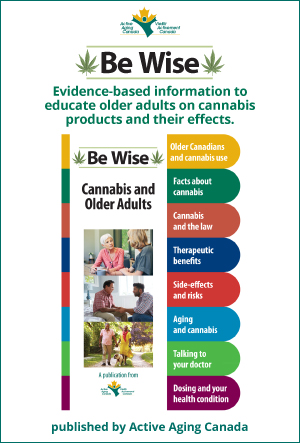Maximize your Strength Training Workouts with Protein
Vol.1, Issue 4, March 2021
March is Nutrition month in Canada. Protein is the nutrient that helps to build muscle. Paying attention to your protein intake is important for making the most of your strength training exercises.
Strength training is a key component of the Canadian 24-hour Movement Guidelines. Older adults benefit a lot from strength training. It reduces age-related muscle loss. It helps with maintaining mobility and reduces the risk of falls. Overall, it reduces risks from poor health.
One of the reasons that we lose muscle mass as we get older is because our muscles are less sensitive to protein and there is less stimulation for building up muscle. But we still have the ability to maintain or regain muscle as we get older. The keys are getting enough protein and challenging our muscles with physical activities.
How much protein do I need to help maintain or build up my muscles?
If you do strength training or plan to start, take a look at how much protein is in your diet. Research suggests that older adults need more than the recommended daily amount.
Older people can make up for age-related changes in how their body takes up protein by eating 1.2 grams or more of protein per kilogram of body weight each day.1
Example: An older adult who weighs 70 kilos needs 1.2 x 70 = 84 grams of protein each day. Whereas a 25-year-old of similar weight needs 56 grams of protein. To give you a sense of what that means in terms of intake, a large chicken breast contains about 25 grams of protein.
How do I get that much protein?
One approach is aiming to eat protein at each meal and even as part of your snacks. The amount of protein can vary depending on your activity level and your body composition. But researchers recommend 0.4 grams of high-quality or complete protein per kilogram of body weight in each meal.2
Example: An older adult who weighs 70 kilos would aim for 28 grams of protein in each meal.
Examples of high-quality protein:
|
|
|
|
|
|
Researchers are still studying the optimal amount of protein for older adults. They are also looking at what times of the day are best to eat it. But we do know this: By challenging your muscles and paying attention to your protein intake, you make the most of your strength training workouts!
Learn more about healthy eating as you get older from the Dieticians of Canada:
https://www.unlockfood.ca/en/Seniors
Healthy eating topics from our Silver Times publication:
https://www.silvertimes.ca/home/healthy-eating
References
- Traylor et al. Protein Requirements and Optimal Intakes in Aging: Are We Ready to Recommend More Than the RDA? Advances in Nutrition. April 2018
- Murphy et al. Dietary Protein to Maintain Muscle Mass in Aging: A Case for Per-meal Protein Recommendations. J Frailty Aging. 2016;5(1):49-58.
Liza Stathokostas, PhD
Research Director
Active Aging Canada









